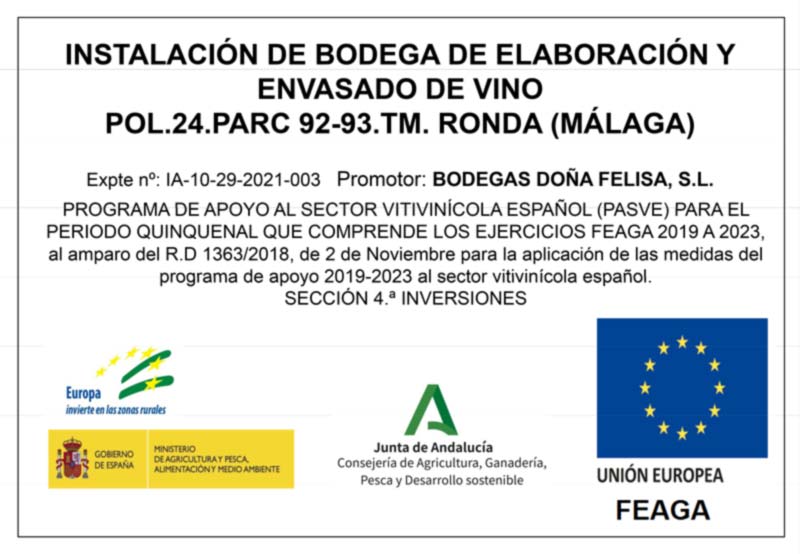Blog
The Convent of Santo Domingo in Ronda: What to know before you go

In the very heart of the historic center of Ronda, perched on the edge of the Tajo gorge and next to the iconic Puente Nuevo, stands one of the city’s most emblematic and historically rich buildings: the Convent of Santo Domingo. Now transformed into the Ronda Conference Center, this convent has witnessed over five centuries of transformations, uses, and architectural styles, and continues to be a landmark for both visitors and locals alike.
Origins and Foundation
The Convent of Santo Domingo was commissioned by the Catholic Monarchs on July 25, 1485, shortly after the Christian conquest of Ronda. However, construction did not begin until the early 16th century, under the patronage of Saint Peter Martyr and designated for the Dominican Order. The goal was to consolidate the Christian presence in the city and provide it with a major religious and cultural center. From its inception, the convent held great importance, even housing the Inquisition Tribunal for centuries, a fact that left a significant mark on its history and on the collective memory of Ronda.
Architecture: A Blend of Styles
The original structure consisted of several parts, of which the church and cloister are the main areas preserved today. The church, located to the southeast, features a rectangular floor plan divided into three naves. The central nave is wider and higher, and is crowned with a majestic polychrome Mudejar ceiling, a fine example of the period’s distinctive “carpintería de lo blanco”. The side aisles are separated by Gothic arches supported by clustered pillars, and semi-circular arches on rectangular pillars—a combination that reflects the transition between Gothic and Mudejar styles.
Centuries of History and Transformation
Over the centuries, the Convent of Santo Domingo has undergone numerous transformations and changes in use. By the late 18th century, the building was in a dire state of disrepair, and part of it was ceded to allow for the widening of the road that leads to the Puente Nuevo, one of the city’s most iconic landmarks. In the 19th century, following the disentailment and the definitive departure of the religious order in 1836, the convent was privatized and repurposed into a market hall, resulting in the demolition of part of its original structure.
During the first half of the 20th century, the building suffered a major fire and, in the 1950s, a carpentry cooperative, the Rondeña Furniture Cooperative, was established in its premises, particularly using the cloister. It wasn’t until the 1980s that the City Council of Ronda acquired the property and launched an extensive restoration project, preserving and highlighting the remaining historical elements while integrating them into a new structure adapted to modern-day use.
The Convent Today: Conference Center and Cultural Venue
Today, the former Convent of Santo Domingo houses the Ronda Conference Center, a modern and versatile space that hosts conferences, conventions, workshops, seminars, exhibitions, presentations, and all kinds of cultural and social events. Its fully equipped rooms can accommodate anything from small meetings of 10 people to events with up to 200 attendees, making it a key venue for the city’s cultural and professional life.
Despite its adaptation to new uses, the building retains the charm and solemnity of its past. Both the church and the cloister are open to visitors, allowing them to immerse themselves in the history and architecture of this unique place. Moreover, its privileged location at 1 Armiñán Street, just steps from the Puente Nuevo, makes it easily accessible by foot, public transport, or private vehicle, with nearby parking available.
Unique Features and Curiosities
The Convent of Santo Domingo is a blend of styles and eras. One can observe Gothic, Renaissance, Mudejar, Mannerist, and Baroque elements, the result of successive renovations and adaptations. Among its curiosities is the fact that it once hosted the Inquisition Tribunal, lending it a special aura and a distinct historical significance.
During its golden age, the convent was the burial site for several distinguished families of Ronda, including the mausoleum of Don José de Moctezuma y Rojas. Time, changes in use, and historical upheavals have left their mark on the building but have also shaped its current character: a space where past and present coexist in harmony.
Practical Information for Your Visit
The Convent of Santo Domingo is open for visits Monday to Saturday from 11:00 AM to 2:00 PM and from 4:00 PM to 8:00 PM, and on Sundays from 11:00 AM to 2:00 PM. Admission is very affordable, with a symbolic fee of just €1, making it a must-see stop for any visitor to Ronda interested in its history and heritage.
Its location, on the edge of the Tajo and in the heart of the old town, makes it easy to combine your visit with other nearby attractions, such as the Puente Nuevo itself, the Don Bosco House Museum, or the lively Armiñán Street, full of shops and restaurants.
Complete Your Visit at Bodega Doña Felisa
To round off your visit to the Convent of Santo Domingo and the city of Ronda, there’s nothing better than enjoying a wine experience at Bodega Doña Felisa. Located in the Serranía de Ronda, between Ronda and Setenil de las Bodegas, our family-run winery is a benchmark for Andalusian wines. Here, you can discover the winemaking process, stroll through the vineyards, and enjoy a tasting of exquisite local wines paired with regional delicacies. The combination of history, art, and culture offered by the Convent of Santo Domingo, along with the wine-growing tradition of the region, will make your visit to Ronda truly unforgettable. Don’t miss the chance to explore the past and present of this magical city, and visit this winery in Ronda to savor the finest wines in a unique setting.



